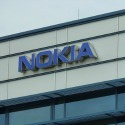
Nokia confirmed that it will remain an important customer of Intel for its 5G products despite earlier problems that were blamed by several analysts partly on the US chipmaker.
The Finnish network equipment maker today announced a new deal for Intel goodies, including the new Atom P5900 processor that Intel unveiled last month.
Described as Intel's first 10-nanometer (nm) system-on-a-chip for baseband processing, the P5900 has attracted the interest of Ericsson and ZTE, as well as Nokia, and is set to be used in products being developed by all three companies, Intel said last month.
In its own release today, Nokia said the Intel processor would be used in its ReefShark-branded silicon, which in turn powers the radio access products it is shipping under its AirScale brand.
News of the deal comes a day after Nokia said it would also be relying on ARM processors developed by Marvell in its ReefShark range.
The moves are part of the Finnish vendor's efforts to fix 5G problems caused by its heavy reliance on field programmable gate arrays (FPGAs). These FPGAs can be configured after the design stage, unlike the customized silicon Nokia is now buying from Intel and Marvell, but they are relatively expensive.
Those product costs were blamed by Nokia for a sharp decline in profitability at its network business last year, when its gross margin shrank to 30.6% from 34% in 2018.
The company is now trying to phase out the FPGAs, which still accounted for about 90% of 5G product shipments in the fourth quarter of 2019. It expects to reduce that figure to 65% by the end of the year and just 30% by the end of 2021 through its collaboration with Intel and Marvell.
The use of more than one silicon supplier seems to represent a shift for Nokia and comes after CEO Rajeev Suri said the company was "let down" by one vendor. In a research report issued shortly after he made those comments, analysts at Barclays said: "We believe the key problem area for Nokia has been the development of the 5G baseband, due to both Nokia's internal development issues and Intel's 10nm delays."
Want to know more about 5G? Check out our dedicated 5G content channel here on Light Reading.
Speaking to analysts on a call last month, Suri said: "What has changed is that we no longer work with only one supplier but with two other SoC [system-on-a-chip] partners making custom silicon for us in mobile networks and they all have some unique assets, be it in RF [radiofrequency] or baseband."
Besides taking the P5900 from Intel, Nokia said it would continue to use the chipmaker's Xeon product, a general-purpose processor, in its cloud data center equipment, sold under the AirFrame brand. That processor can be used to support virtualized radio access network deployments, it said.
News of Nokia's 5G product problems triggered a sharp fall in the company's share price when third-quarter results were published last October and its share price had dropped 1.8% in Helsinki today at the time of writing, to about €3.34. It is down from €5.34 this time last year.
Related posts:
— Iain Morris, International Editor, Light Reading
Read more about:
EuropeAbout the Author(s)
You May Also Like












